Nationality American Name Jamie Wyeth Education Home-schooled Role Painter | Spouse Phyllis Mills (m. 1968) Movement American realism Siblings Nicholas Wyeth | |
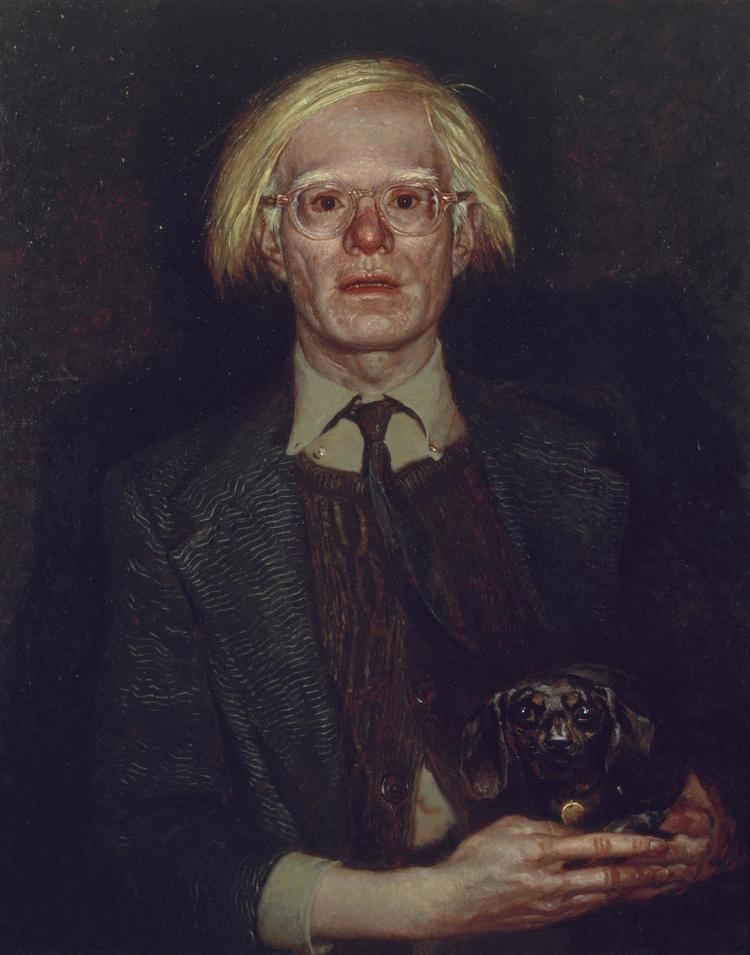 | ||
Full Name James Browning Wyeth Elected National Academy of Design Parents Andrew Wyeth, Betsy James Wyeth Grandparents N. C. Wyeth, Carolyn Bockius Wyeth Similar People Andrew Wyeth, N C Wyeth, Henriette Wyeth, Carolyn Wyeth, Nathaniel Wyeth | ||
Jamie wyeth paints inferno see the artist s process
James Browning Wyeth (born July 6, 1946) is a contemporary American realist painter, son of Andrew Wyeth, and grandson of N.C. Wyeth. He was raised in Chadds Ford Township, Pennsylvania, and is artistic heir to the Brandywine School tradition - painters who worked in the rural Brandywine River area of Delaware and Pennsylvania, portraying its people, animals, and landscape.
Contents
- Jamie wyeth paints inferno see the artist s process
- Jamie Wyeth Art as Witness to History
- Early life
- Artistic study
- Marriage
- Homes
- Style and technique
- Early
- Eyewitness to Space
- Political portraits and works
- Main body of work
- Other works
- Critical reaction
- Exhibitions
- Museums and awards
- References

Jamie Wyeth: Art as Witness to History
Early life
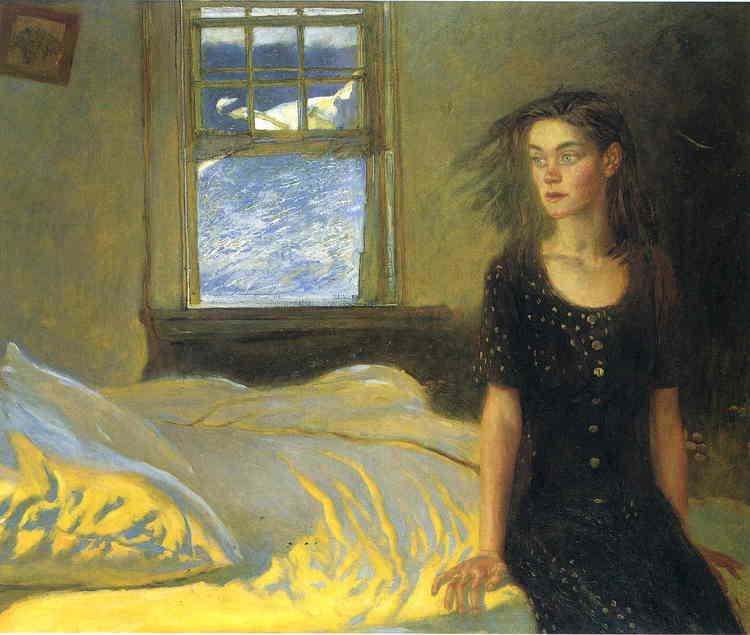
James Wyeth is the second child of Andrew and Betsy Wyeth, born three years after brother Nicholas, his only sibling. He was raised on his parents' farm "The Mill" in Chadds Ford, Pennsylvania, in much the same way as his father had been brought up, and with much the same influences. He demonstrated the same remarkable skills in drawing as his father had done at comparable ages. He attended public school for six years and then, at his request was privately tutored at home, so he could concentrate on art. His brother Nicholas would later become an art dealer.
Artistic study
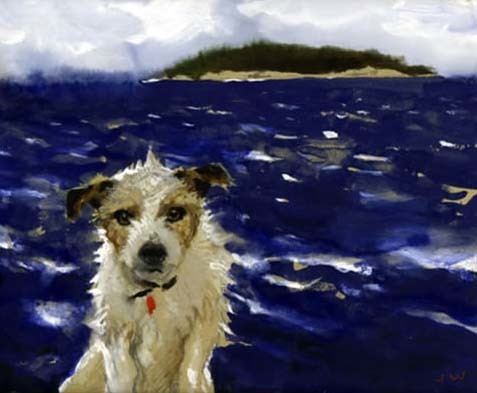
At age 12, Jamie studied with his aunt Carolyn Wyeth, a well-known artist in her own right, and the resident at that time of the N. C. Wyeth House and Studio, filled with the art work and props of his grandfather. In the morning he studied English and history at his home, and in the afternoon joined other students at the studio, learning fundamentals of drawing and composition. He stated later, "She was very restrictive. It wasn't interesting, but it was important." Through his aunt, Jamie developed an interest in working with oil painting, a medium he enjoyed at a sensory level: the look, smell and feel of it. Carolyn Wyeth and Howard Pyle were his greatest early influences in developing his technique in working with oil paint. While Jamie's work in watercolor was similar to his father's, his colors were more vivid.
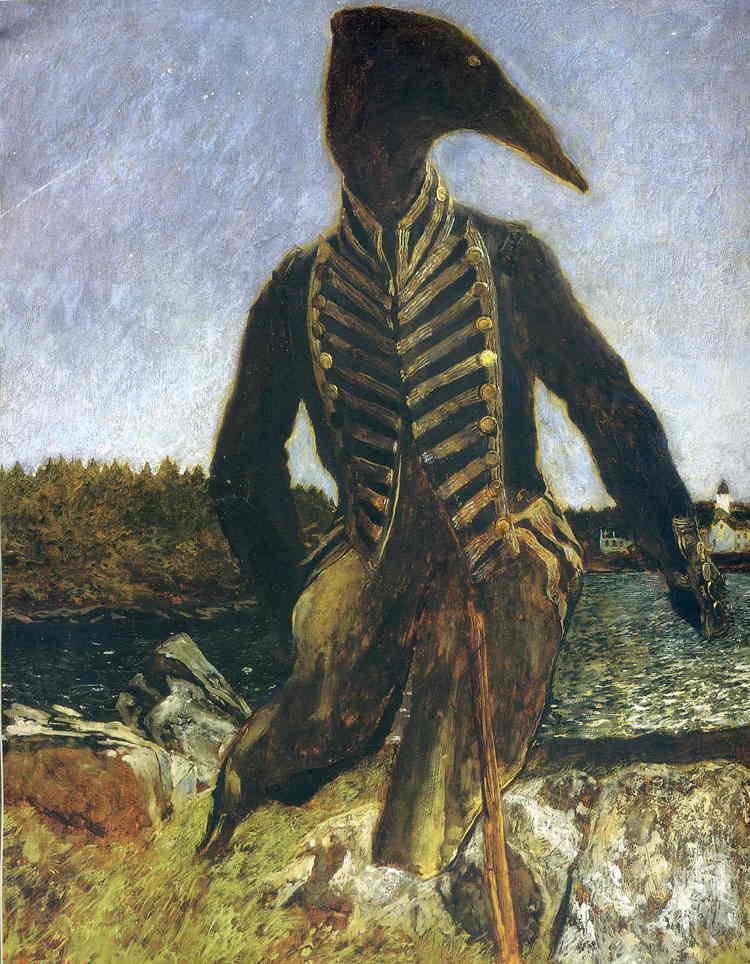
As a boy, Jamie was exposed to art in many ways: the works of his talented family members, art books, attendance at exhibitions, meeting with collectors, and becoming acquainted with art historians. He also developed an offbeat sense of humor, sometimes veering to the macabre.
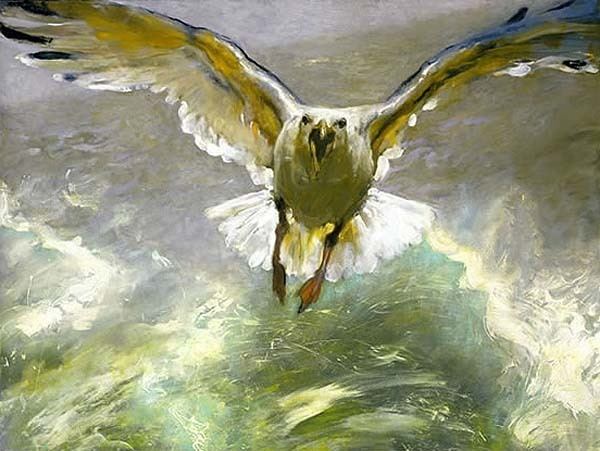
For at least three years in the early 1960s, when Wyeth was in his middle to late teens, Wyeth painted with his father. Of their close relationship, Wyeth has said: "Quite simply, Andrew Wyeth is my closest friend—and the painter whose work I most admire. The father/son relationship goes out the window when we talk about one another's work. We are completely frank—as we have nothing to gain by being nice." At age 19 [about 1965] he traveled to New York City, to better study the artistic resources of the city and to learn human anatomy by visiting the city morgue.
Marriage
In 1968, Wyeth married Phyllis Mills, daughter of Alice du Pont Mills and James P. Mills and one of his models. Although she had been permanently crippled in a car accident and used crutches (and later a motorized chair) to get around, Wyeth found her to be a strong, determined woman whose elusive nature meant that he continually discovered something new about her. Mills is the subject of many of his paintings (which usually depict her seated) including And Then into the Deep Gorge (1975), Wicker (1979), and Whale (1978), as well as, by implication, his painting of Phyllis’ hat in Wolfbane (1984).
Phyllis had worked for John F. Kennedy when he was a senator and president. She has served on several boards, including "the National Committee for Arts for the Handicapped, the National Trust for Historic Preservation and the National Resource Defense Council." A steeplechase rider when young, before her crippling accident, she later took over her parents' thoroughbred horse racing and breeding interests, winning the 2012 Belmont Stakes with Union Rags.
Homes
In the 1960s Jamie purchased the Lobster Cove property on Monhegan Island in Maine, which had previously been owned by Rockwell Kent, the famed American painter of modernist wilderness landscapes admired by his grandfather and succeeding generations. Jamie has painted many of the local people on Monhegan Island. He and his wife have a home at Chadds Ford, Pennsylvania on the Brandywine. In the 1990s his parents, Betsy and Andrew Wyeth, sold Jamie the Tenants Harbor Light on Southern Island in Maine that they had owned since 1978. As it provides him the solitude and subject matter he most enjoys for his work, most of his painting is done at Tenants Harbor; the rest is done at Chadds Ford. The light station has been inactive since 1933. The tower that held the lantern was reconstructed for his studio.
Style and technique
Early on, Wyeth became interested in oil painting, his grandfather's primary medium, although he is also adept in watercolor and tempera, his father's preferred media. In describing his aunt's way of thickly applying oil to her palette, he stated, "I could eat it. Tempera never looked particularly edible. You have to love a medium to work in it. I love the feel and smell of oil."
In addition to studying his aunt's oil technique, he also admired his father’s and grandfather's work, and that of Howard Pyle, his grandfather’s teacher, as well as American masters Winslow Homer and Thomas Eakins. What inspired Wyeth most was not the subject matter or technique of his grandfather, but his "sense of total personal involvement with and intuitive grasp of his subjects". Jamie Wyeth adopted a wider palette of colors than his father’s, which was closer to his aunt’s and grandfather's color choices.
Wyeth's artistic reach is broader than his father's and grandfather's. He excels in drawing, lithography, etching, egg tempera, watercolor, and mixed media. Though grounded in this family’s artist tradition and subjects, and bound by the same solitude of his art, his wider travels and experiences have shaped a more rounded artist. In travels to Europe, he studied the Flemish and Dutch masters, and learned the intricate and exacting process of lithography, producing a substantial amount of graphic work.
On portrait painting, Wyeth stated, "To me, a portrait is not so much the actual painting, but just spending the time with the person, traveling with him, watching him eat, watching him sleep. When I work on a portrait, it's really osmosis. I try to become the person I'm painting. A successful portrait isn't about the sitter's physical characteristics—his nose, eyeballs and whatnot—but more the mood and the overall effect. I try not to impose anything of mine on him. I try to get to the point where if the sitter painted, he'd paint a portrait just the way I'm doing it."
Like his aunt Carolyn, Wyeth enjoys painting domestic animals, such as chickens, dogs, pigs, and horses. To do so, he pays particular attention to the texture of the animal's fur or feathers, the glossiness of its eye, the grass around its feet. To create the desired effects, he uses brushstrokes for texture and varnish for sheen. Wild birds that appear frequently in his work are the common seagull and the raven, the first of which also features in his Seven Deadly Sins series. Pumpkins also have appeared in several paintings, often carved into Jack-o-lanterns as if for Halloween. Other repeated subjects include the trunks of trees, and their exposed tangled roots, or tree stumps.
Since the 1970s, Wyeth has often painted on corrugated cardboard, and now uses "archival" versions of the surface. He likes the rough striated effect it gives to his paintings, and he has also portrayed the material with great fidelity in depictions on conventional canvas, such as the painting 10W30 (1981), depicting a pair of chickens nesting in a discarded carton that once had held 10W30 grade engine oil. He also uses thick, opaque watercolor pigments, straight from the tube, creating effects similar to oil paints.
To evade interruptions by curious sightseers, Wyeth has resorted to painting outdoors in a weathered, smelly, used fish bait box, in the manner of a plywood hunting blind.
Early
With advice from his father, always his closest friend but always frank, Wyeth quickly developed his technique and style. In 1963, at the age of 17, he painted Portrait of Shorty, a bravura minutely detailed portrait of a local railroad worker. Shorty was a man who lived for twenty years in Chadds Ford, in a humble hut as a hermit, only speaking with a local store owner. The composition of an unshaven Shorty against an elegant wing chair is unexpected. Joyce Hill Stoner, art historian and paintings conservator, found it has the "exactitude characteristic of sixteenth-century German oil technique."
Lincoln Kirstein, a family friend of the Wyeth family, was the subject of his first major portrait of a prominent person, titled appropriately, Portrait of Lincoln Kirstein. Kirstein was impressed by the portrait, and declared Wyeth the finest American portrait painter since John Singer Sargent. Kerstein's quote made it into the catalog for his first one-man exhibition, at the Knoedler Gallery in New York in 1966. Landscapes and portraits of people from the Chadds Ford area were presented at the exhibit.
"Eyewitness to Space"
From 1966 to 1971, Wyeth served in the Delaware Air National Guard. Although at one point he was scheduled for immediate deployment to the Vietnam War, flights were cancelled for noncombatants. During that period, he painted Adam and Eve and the C-97 (1969), depicting the Biblical couple astonished by a Boeing C-97 Stratofreighter cargo plane flying overhead. The painting was executed using military-standard oil paint on a piece of parachute cloth measuring 10 by 30 feet (3.0 by 9.1 m).
His assignment changed when he was granted top security clearance and took part in “Eyewitness to Space”, a program jointly sponsored by NASA and the National Gallery of Art in Washington DC, to depict the activities of the Apollo moon mission through an artist's perspective. A total of 47 artists were involved in the "Eyewitness to Space" program, including Robert Rauschenberg, Lamar Dodd, Norman Rockwell, and Morris Graves. Participants met astronauts at launch sites, such as Cape Kennedy, or rode helicopters to observe the pickup of astronauts. Of the works developed, the National Gallery of Arts chose 70 paintings, sculptures, and drawings for "The Artist and Space" exhibit that ran from December 1969 to early January 1970.
Political portraits and works
Main body of work
Other works
Other noteworthy commissions in addition to Wyeth's portrait of JFK have been the design of a 1971 eight-cent Christmas stamp, the official White House Christmas cards for 1981 and 1984, and the Eunice Kennedy Shriver portrait for use on the 1995 Special Olympics World Summer Games Commemorative coin. He also lent his support to lighthouse preservation efforts in Maine in 1995 with his exhibition, "Island Light".
Wyeth has illustrated three children's books, The Stray (1979), written by his mother Betsy James Wyeth, Cabbages and Kings (1997), written by Elizabeth Seabrook., and Sammy in the Sky (2011) about the loss of a beloved dog, by Maine author Barbara Walsh.
Wyeth has also produced detailed miniature dioramas (called tableaux vivants), including two 2013 works: one portrays Andy Warhol dining with friends at The Factory, and another depicts Lincoln Kirstein and other friends dining at a New York restaurant. These works were exhibited in a 2014 retrospective show.
Critical reaction
When Wyeth had his first exhibition in New York in 1965, he received a scathing review by the New York Times. His work was compared to that of his ancestors, neither of whom were considered contenders in the commercial business of modern art. Jamie Wyeth’s critics level some of the same charges as they do against his father—to some, both artists seem anachronistic, too close to illustration, and out of touch with the 20th century evolution of Post-Picasso modernism. He answers, "We're charged, my father and I, with being a pack of illustrators. I've always taken it as a supreme compliment. What's wrong with illustration? There's this thing now that illustrations are sort of secondary to art and I think it's a bunch of crap."
According to the Brandywine River Museum, "James Wyeth had earned national attention with a posthumous portrait of John F. Kennedy and other work. Later, he produced striking portraits of Rudolf Nureyev and Andy Warhol, studies for which are in the museum's collection. Since then, Wyeth has established a distinctive style, characterized by strong images and sharp contrasts in his landscapes and portraits. He is known for his monumental animal portraits, including Portrait of Pig and Raven in the museum's collection, which represents various stages in his changing style."
In "Jamie Wyeth: Proteus in Paint" Joyce Hill Stoner said of Wyeth: Jamie Wyeth lives on his own terms with a healthy respect for his heritage and a unique ability to translate acute observations into a spectrum of visual experiences in an impressive range of styles from the laser-like intensity of Portrait of Shorty to the archetypal but ironic encrusted image of an animal friend in Portrait of Pig to the eerie painterly dreamscape of Comet.
Ann Morgan, author of Oxford Dictionary of American Art and Arts, describes his style as one that follows the realistic style of his father, Andrew Wyeth, while venturing into "more psychologically fraught territory". When making portraits, Wyeth sees into the nature of an individual and portrays them with such detail and realism that the shocked subjects "often hid them up in their closets".
Exhibitions
Museums and awards
Jamie Wyeth’s works are in the collections of the Brandywine River Museum, the Farnsworth Art Museum, the Terra Museum of American Art, the National Gallery of Art, the National Portrait Gallery, the Fine Arts Museums of San Francisco, and the Museum of Fine Arts, Boston.
In 1972 Wyeth was appointed a council member of the National Endowment for the Arts. In 1975 he became a member of the board of governors of the National Space Institute. He is a member of the National Academy of Design and the American Watercolor Society. He holds many honorary degrees including from Elizabethtown College (1975), Dickinson School of Law (1983), and Pine Manor College (1987).
